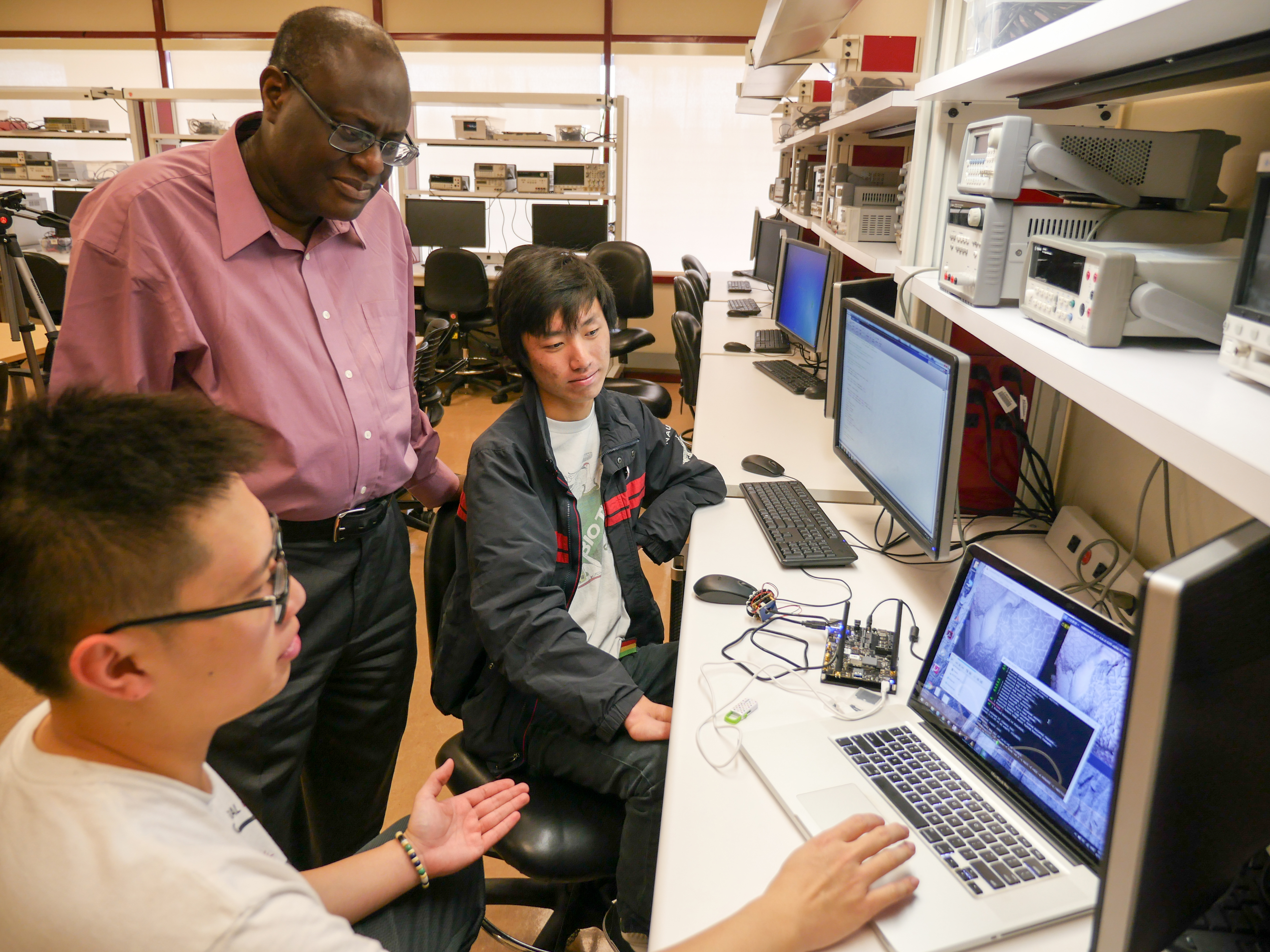
Watching the Invisible to Save Babies’ Lives
The mention of Sudden Infant Death Syndrome, or SIDS, is enough to send a chill through any parent’s heart. In the U.S. each year, 2,000 babies under the age of 12 months die unexpectedly in their sleep. Research shows that many of these deaths could be prevented through practicing safe sleep practices—having the baby sleep on her back alone in a crib with no toys, pillows, or blankets to cause accidental suffocation. Since the “Back to Sleep” public health campaign went into effect in 1992, SIDS cases have fallen 50 percent. Still, unexpected and unexplained infant mortality persists, and parents worry each time they put their babies down to sleep.
To help alleviate that concern, electrical engineering seniors Jackson (Xiaoting) Liu and Kyle Takeuchi are prototyping an IoT baby monitor that converts a video signal of a sleeping baby’s movements to a pulse per minute (PPM) signal and notifies parents in real-time if the PPM falls below an acceptable range. The pair is using code developed at MIT to magnify images captured on video by about 30x. Basically, what is nearly invisible to the naked eye is captured in minute color changes in the pixels of video. By magnifying those alterations, the baby’s chest rise and fall can be documented and pulse rate can be determined. “It’s crazy code with about 100 lines of code for each function, and within that function there is another function,” said Liu, laughing and shaking his head. “But it cannot stream video. We are adding that application.”
Advised by electrical engineering professor Tokunbo Ogunfunmi (who is also director of SCU’s Signal Processing Research Lab) and industry advisor and SCU adjunct lecturer Shivakumar Mathapathi, the pair researched and discarded a number of approaches, including converting the code to C language. Ultimately they opted to run live video from a baby monitor through a PC where the images are magnified, PPM is calculated and assessed, and notification is automatically sent if needed. “Shivakumar gave us an Artik board—a smart IoT platform—that we’re using to communicate with a camera and the baby monitor,” said Takeuchi, “and he tells us what other tools we can use to get the board working. When we get stuck, our advisors help us find new ways to try.”
“Using MIT’s technique for an IoT-based system to see invisible motion and noninvasively monitor a newborn’s breathing is exciting,” said Ogunfunmi. The team agrees. “Right now,” said Liu, “a monitor can tell you if a baby is crying, but with SIDS there is no noise and parents don’t know there is a problem. While this application can’t prevent SIDS, it can shorten response time and hopefully minimize some of the parents’ fear.”
Photo: Nicole Morales